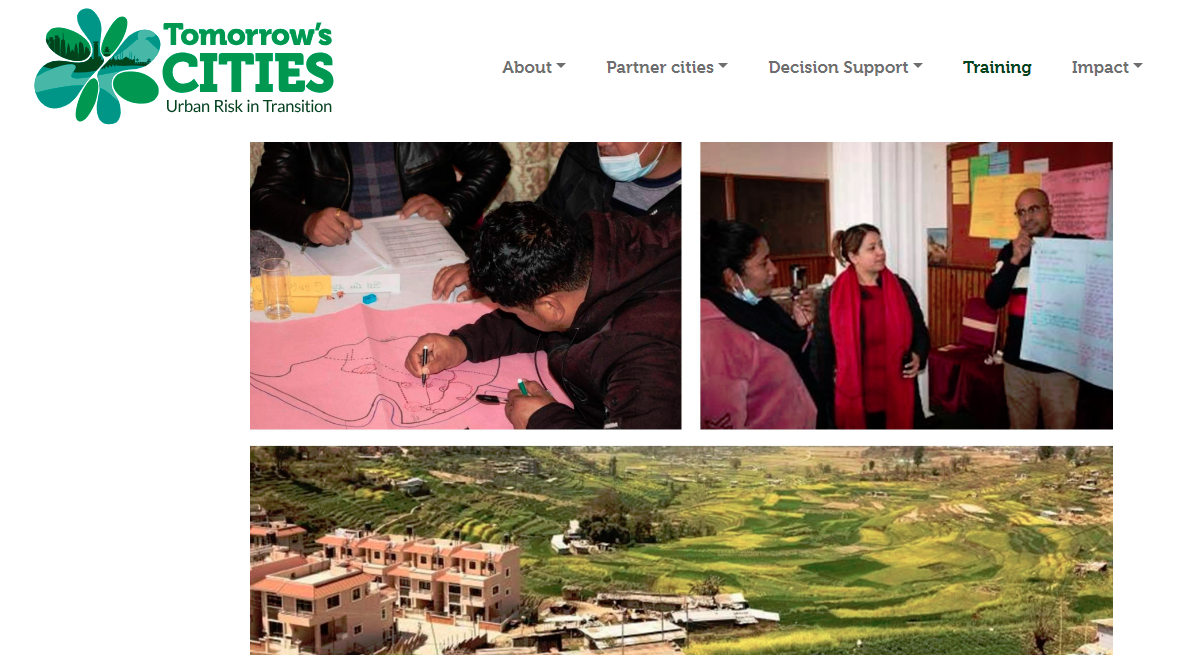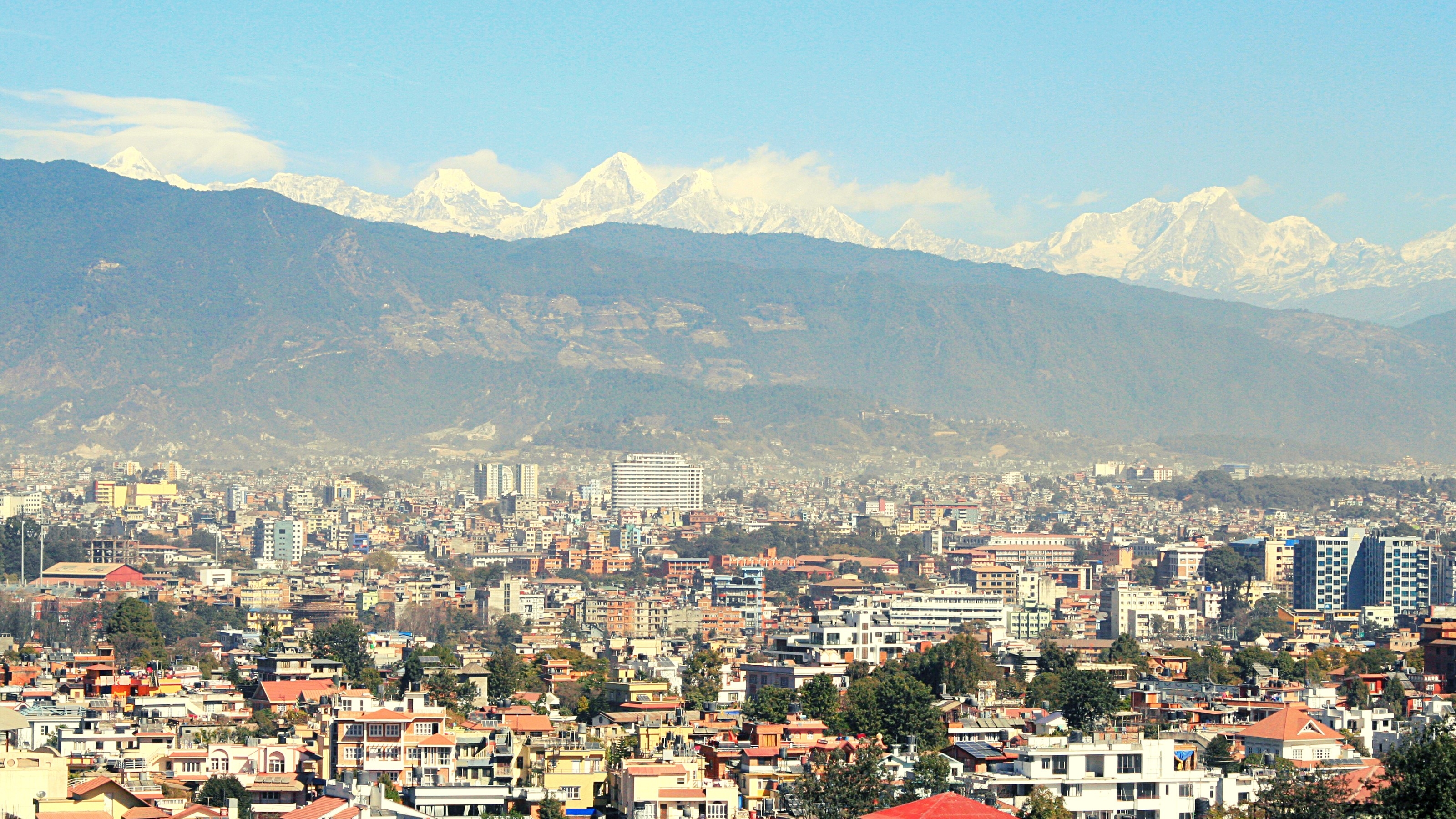
Author(s): Sérgio Esperancinha
Once a medieval town, Khokana, on the southern limits of Kathmandu and home of the indigenous Newar (Jyapu) community, is changing the face of urban development in Nepal with the help of Tomorrow’s Cities.
Some 50 million years ago the Indian tectonic plate collided with the Eurasian plate and started to create what is today the tallest mountain range on Earth, the Himalayas. This movement, that continues until today and has since then been shaping the region, from its geography to its culture, is also the responsible for the high seismicity of Nepal. The latest earthquake, in April 2015 caused 9000 deadly victims, over 100 000 injured and close to 800 000 damaged or destroyed homes. Nepal, however, is also affected by other hazards such as floods, caused by the strong rains of the monsoon, landslides and fires, particularly grave in low-income areas of Kathmandu.
Like in other regions across the world, Kathmandu and its surrounding urban centres have been expanding at unprecedented rates following a global trend identified in 2008 by the United Nations, a process that, coupled with exposure to several natural hazards, is driving disaster risk.
In Nepal, the rapid growth in urban population, which is a result of rural-urban migration and the conversion of seemingly rural areas into municipalities, has caused a substantial expansion of informal settlements, increasing the risk of inundation and floods and the exposure of great part of the urban population to a series of different hazards.
Dilli P. Poudel, Senior Researcher at the Southasia Institute of Advanced Studies.
How an ancient community is changing Nepal’s urbanisation landscape with the help of Tomorrow’s Cities.
Situated in Ward 21 of Lalitpur Metropolitan City (LMC), on the southern part of the Kathmandu valley, Khokana is the medieval Newari town covering a total area of 3.2 sq. Km and inhabited by more than 5000 people. Its origins date to the period when Lichhavi King Narendra Dev (643–679 A.D) ruled over the region and its inhabitants are mainly from the Maharjan and Dangols groups, the indigenous Newar (Jyapu) community who moved from core Kathmandu to Ku-desh, an archeological site near Shikali, and latermigrated to Khokana set in the hillocks.
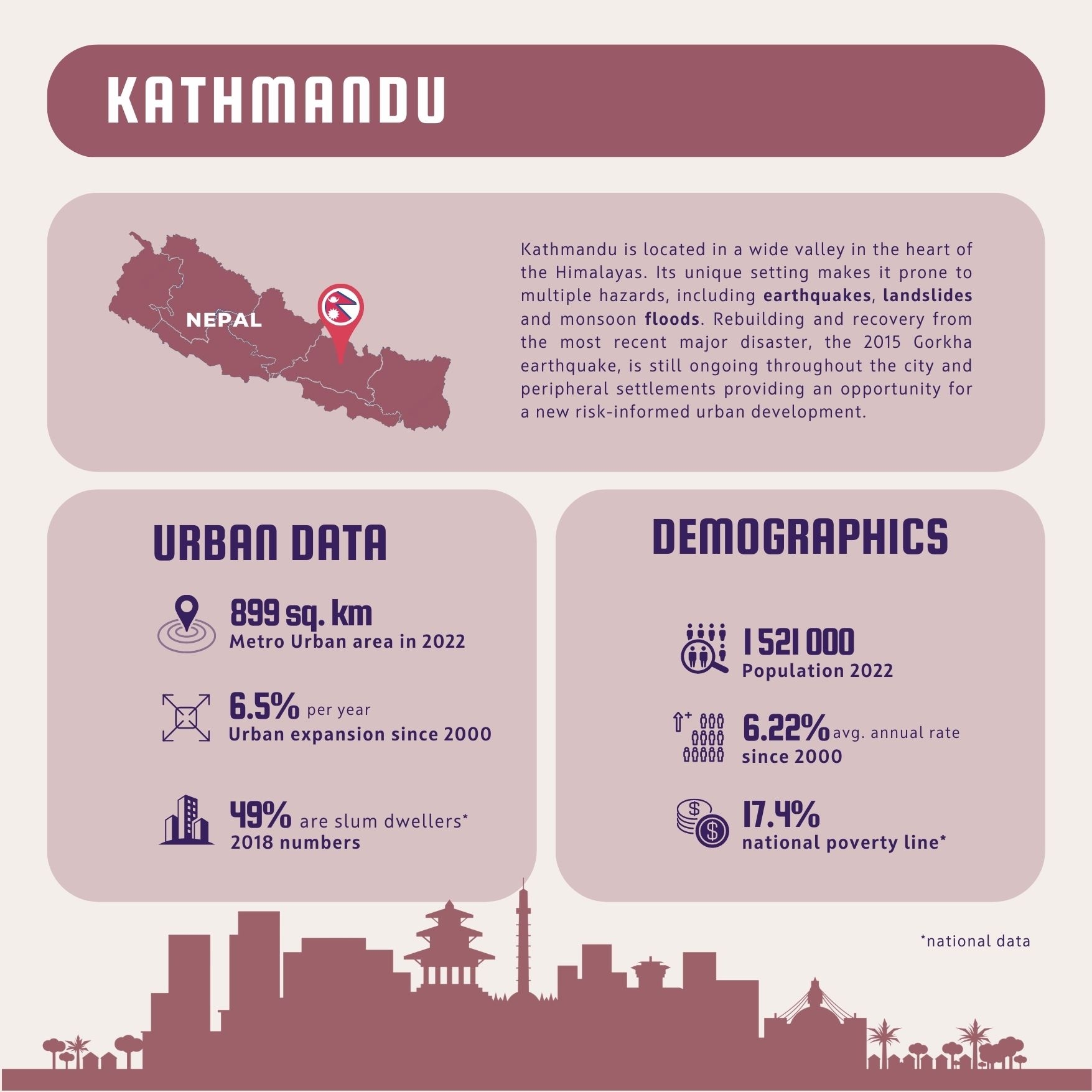
Khokana is one of the rapidly urbanizing towns in the Kathmandu valley and, while its southern part remains intact with congested and homogenous settlements, a different style of urban development is taking place in the periphery of the traditional town. The vast open land of the Doh-phat, a fertile area once used for agricultural purposes only and which separates southern and northern Khokana, is rapidly being occupied with galvanized iron sheets, factories, warehouses or plastic tunnels, and multiple Taharas, temporary shelters constructed after the 2015 earthquake. This haphazard development is disrupting the natural flow of the monsoon waters and exposing this newly urbanized area not only to floods but also to multi-hazards like landslides, fires, and earthquakes.
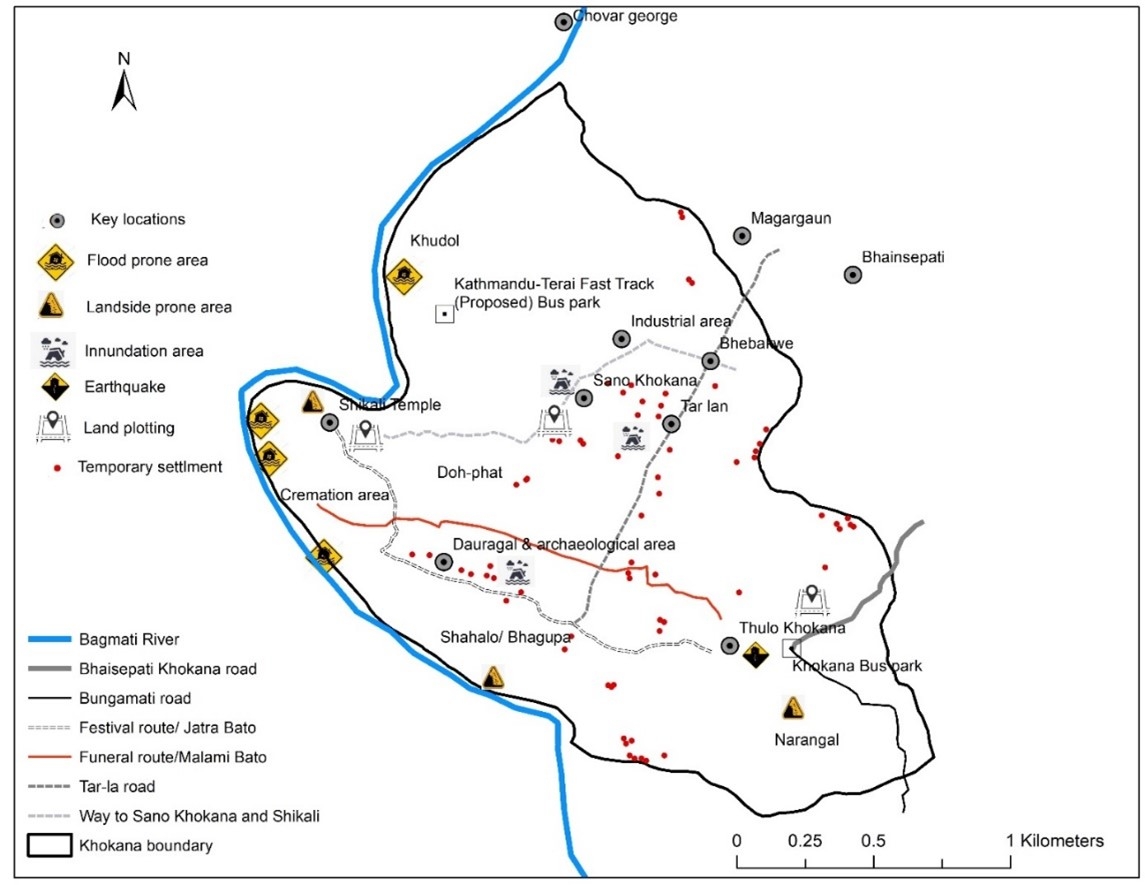
To try and change this path that might lead to disaster, Tomorrow’s Cities and the Kathmandu Team have deployed the Hub’s operational framework to facilitate multi-hazard, risk-informed planning and decision-making in expanding cities, the Tomorrow’s Cities Decision Support Environment (TCDSE). Using a co-production approach, the TCDSE gives voice not only to the planning authorities, municipalities, the government and the private sector, but also to the communities who will live in these future cities.
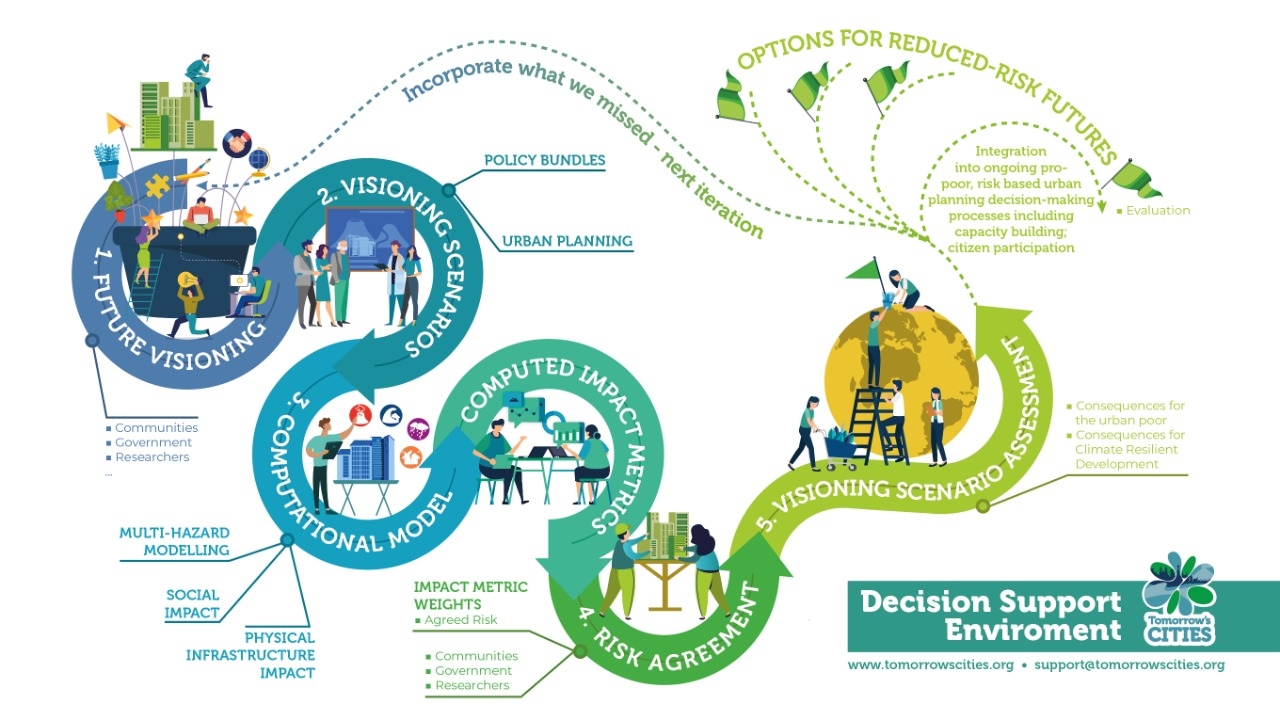
The framework starts with an initial stage of Future Visioning in which stakeholders collectively imagine, discuss, and propose visions for their future city. A back-casting process is employed that involves imagining a desired future and then tracing the steps back to the present to determine what actions must be taken to achieve that future. While doing this, stakeholders can identify the challenges or obstacles that need to be overcome and addressed through additional planning and action.
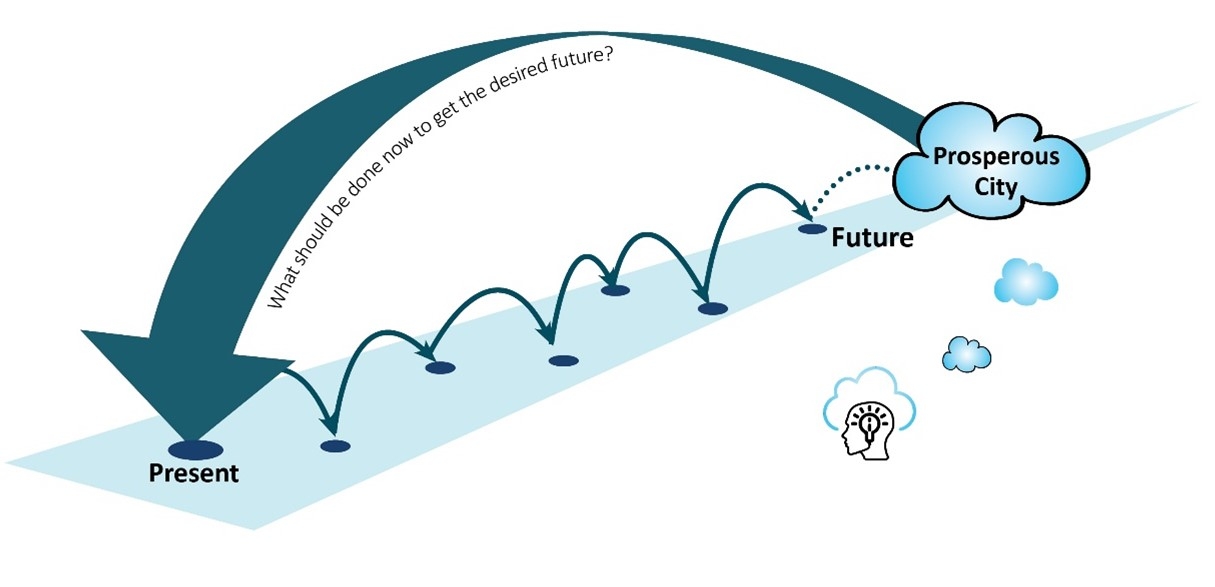
Khokana Visioning Booklet – Community-led Visions of Future Khokana
In Khokana, Future Visioning involved engaging with a diverse group that included the Ward Disaster Management Committee and the Ward authorities, but also social groups such as women, marginalised and migrant communities, and the inhabitants of Sano Khokana, a small settlement within of LMC -21 administrative boundary.
These engagements led to the production of the Khokana Visioning Booklet (written in Nepali), recently published by the Southasia Institute of Advanced Studies (SIAS) and launched last week in Kathmandu with the presence of the Mayor, the Deputy Mayor, the LMC 21 Ward chair and Prof. Dr. Sangeeta Sing of the Institute of Engineering. During the launch event, a workshop with more than 35 participants from Khokana, Tomorrow’s Cities researchers and Lalitpur Metropolitan City, was organised and the booklet was offered by the ward chair to LMC’s Mayor and Deputy Mayor.
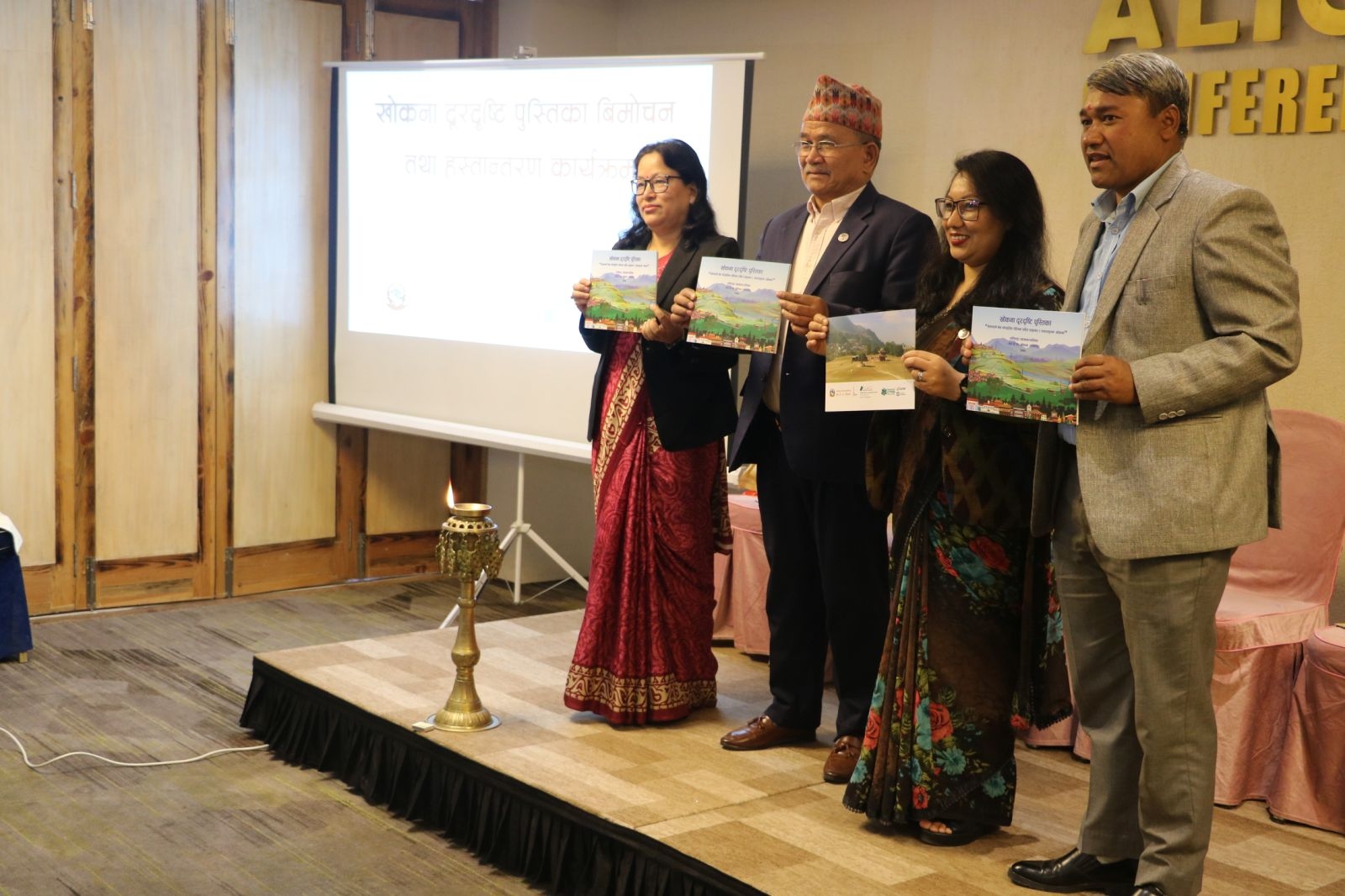
This booklet introduces Khokana, historically, geographically and demographically with a brief analysis of the haphazard urbanisation and the increasing disaster risks. It also explains the visioning methods, including several infographics to facilitate the understanding of the findings by the community, and presents the visions that the different groups expressed during the Visioning workshops.
The Ward Disaster Management Committee’s vision is focused on finding a balance between the development of capable human resources, the long-term protection of the local culture and a safe, equitable, and prosperous Khokana with eco-friendly, and risk-sensitive infrastructures. In its turn, Khokana’s Ward aims to convene the historical legacy of mustard oil production and the traditional Newa–styled houses with a modern Khokana. Their aim is to promote domestic and global tourist but also a development of the city that encompasses advanced agriculture, higher education institutions and other infrastructures that enable the local population to have equitable access to clean water, healthcare, information technologies, public transports and renewable energy sources. With a different vision but equally focused on equitable access to quality infrastructure, education and health services, the Women, Marginalized and Migrants Group, many from the Newar indigenous community, also long for the recognition of their cultural identity. This desire for identity affirmation and recognition was also expressed by the inhabitants of Sano Khokana, who stressed that the preservation and promotion of their mother tongue, culture, and traditions and the possibility of establishing their settlement as a live open-air museum was of especial importance.
By taking into account these diverse visions and aspirations, Tomorrow’s Cities researchers summarised Khokana’s Future Visioning into a Meta Vision:
A prosperous and equitable Khokana with a glorious Newa cultural identity.
The booklet shows that, despite their differences, all the disaggregated groups that participated in the Visioning exercises were not only fully aware of the need to reduce risk in the future but also concerned about the inclusive development of the future Khokana city.
On the other hand, the local government, accepting the increasing numbers of the migrant community in Khokana, is interested to include their aspirations in planning and decision-making and the ward authority explicitly expressed their interest in implementing the visions in the future.
Dilli P. Poudel, Senior Researcher at the Southasia Institute of Advanced Studies.
Learn more about the Future Visioning workshops in Khokana community and watch our videos.
Future Visioning Workshop 1
Published on The Tomorrow’s Cities on February 2023.

